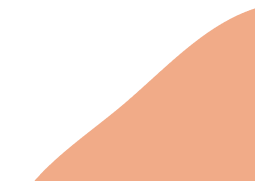1. What is a Solar Inverter (Grid-Tied)?
A grid-tied solar inverter is a crucial component in a photovoltaic (PV) system that converts direct current (DC) electricity generated by solar panels into alternating current (AC), which is usable by households, businesses, or can be fed into the power grid. Grid-tied inverters synchronize the AC output with the grid's electrical frequency and voltage while ensuring safety and system efficiency. These inverters automatically cease exporting power during grid outages, ensuring safety for the utility workers repairing the grid.
2. Types of Solar Inverters (Grid-Tied)
Grid-tied solar inverters can be classified based on their design and application:
String Inverters: Also known as centralized inverters, they connect multiple PV panels in series to form a "string," which feeds into the inverter to convert the combined DC input to AC.
Microinverters: These inverters handle the conversion of DC to AC at the individual solar panel level, increasing overall system efficiency by minimizing the impact of shading or varying orientations on solar panels.
Power Optimizers: With functionality similar to microinverters, power optimizers optimize DC power at the individual panel level but feed the output to a centralized inverter for the actual DC-to-AC conversion.
3. Applications of Solar Inverters (Grid-Tied)
Grid-tied solar inverters are applicable in various solar energy installations:
Residential Solar Systems: Homeowners with grid-connected solar installations utilize grid-tied inverters to power their household appliances from solar energy.
Commercial Solar Installations: Connecting commercial solar energy systems to the grid allows businesses to obtain grid-tied solar inverters for efficient AC electricity conversion.
Rooftop Solar Systems: Grid-tied solar inverters are employed in rooftop solar panel installations, whether residential or commercial, to provide seamless electricity flow to the building or back to the grid.
Solar Farms and Utility-Scale Installations: For large-scale solar power plants connected to the grid, grid-tied inverters play a key role in converting the generated solar power into usable electricity.
4. Advantages of Solar Inverters (Grid-Tied)
Grid-tied solar inverters offer several benefits:
Efficient Energy Utilization: By synchronizing with the utility grid's frequency and voltage, grid-tied inverters ensure efficient energy conversion and usage.
Cost Savings: Excess power generated and exported to the grid can result in net metering credits or feed-in tariffs, leading to energy cost savings or additional income.
Seamless Integration: Grid-tied inverters enable smooth integration of solar energy with the grid, allowing users access to continuous power even when solar generation is lower.
Back-up Network: In case of insufficient solar energy availability or outages, grid-tied inverters leverage the grid supply as a backup, ensuring a reliable power source.
Enhanced System Performance: String inverters, microinverters, and power optimizers each provide varying levels of efficiency and optimization, giving users options for their specific system requirements.
5. Production of Solar Inverters (Grid-Tied)
The manufacturing process for grid-tied solar inverters involves several stages:
Design and Engineering: Inverters are designed considering efficiency, grid synchronization capabilities, system size, and compatibility with solar panels.
Circuitry and Component Production: Electronic components, such as capacitors, transformers, and microchips, are manufactured and configured to build the inverter's circuitry.
Enclosure Fabrication: The outer casing is designed and built to house the internal components, incorporating features like cooling systems and electrical connections.
Assembly and Integration: The electronic components, circuitry, and enclosure are assembled and connected, forming a complete and functional grid-tied inverter.
Quality Control and Performance Testing: Completed inverters undergo extensive testing for efficiency, durability, and overall performance to meet industry standards and ensure their reliability.
6. Factors Affecting Solar Inverter (Grid-Tied) Pricing
Several factors can influence the price of grid-tied solar inverters:
Inverter capacity and output
Inverter technology type (string, microinverter, or power optimizer)
Efficiency and reliability
Additional features, such as remote monitoring or system optimization
Brand reputation and warranty
7. What to Consider When Buying Solar Inverters (Grid-Tied)
When purchasing grid-tied solar inverters, keep the following factors in mind:
Compatibility: Ensure the chosen inverter is compatible with the solar panel array and electricity grid's requirements, including voltage, power capacity, and grid connection standards.
Efficiency: Opt for inverters with high efficiency to maximize DC-to-AC conversion, reducing energy losses, and enhancing system performance.
Scalability: Consider the inverter's compatibility and expandability with future system upgrades or capacity expansions.
Product Quality and Reliability: Choose a reputable manufacturer known for producing high-quality and reliable inverters.
Warranty and Support: Look for comprehensive warranties covering material defects, performance guarantees, and after-sales support.
8. Conclusion
Grid-tied solar inverters are crucial components in a photovoltaic system, enabling efficient conversion of solar-generated electricity and integration with the grid. Understanding various types, applications, benefits, production processes, and essential factors to consider when purchasing these inverters helps users make informed decisions for their solar installations. Investing in grid-tied solar inverters not only enhances solar energy utilization but also supports the growth of renewable energy, contributing to a cleaner and more sustainable environment.




